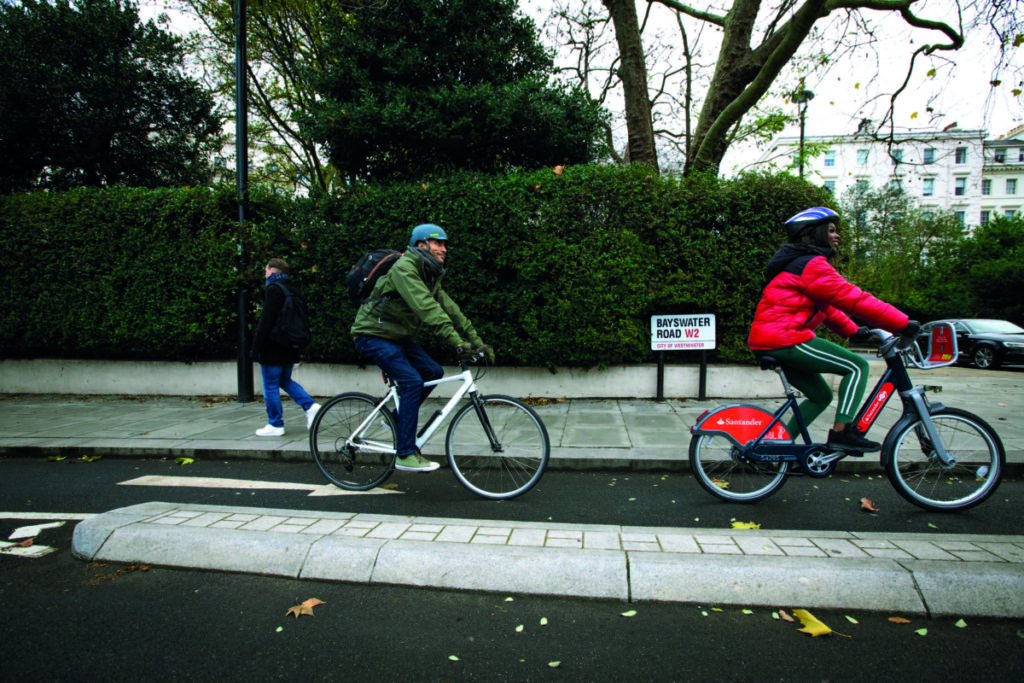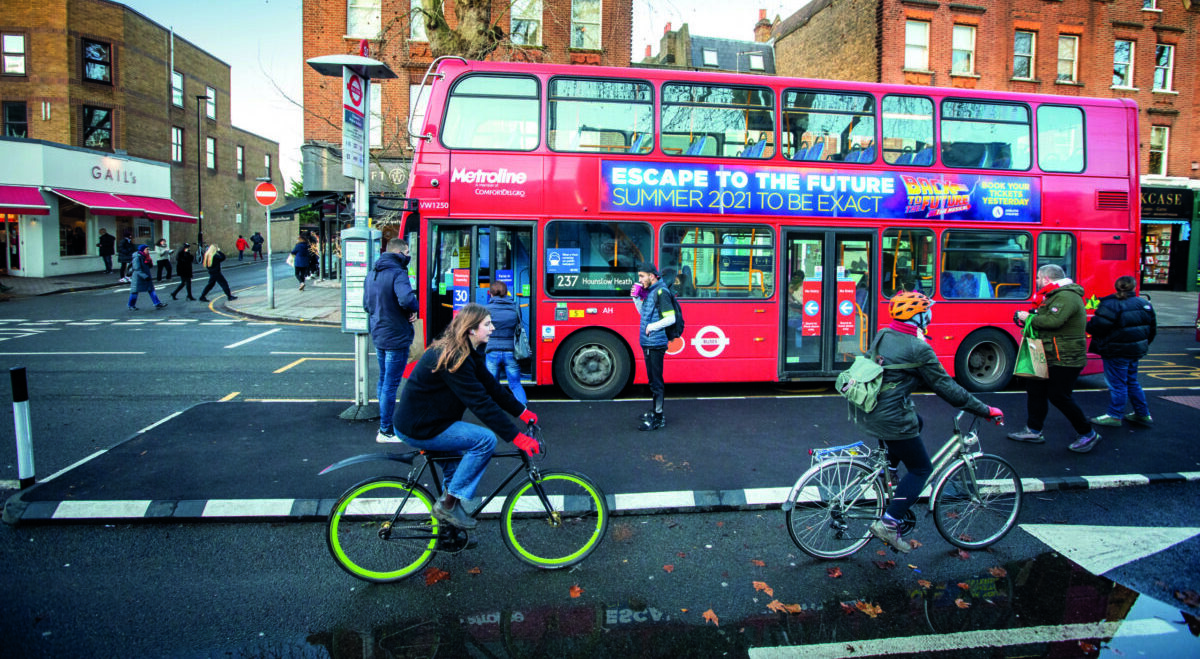Transport for London (TfL) has published data from its annual Travel in London report, showing there has been a continued boom in walking and cycling in London, with levels of cycling remaining 40% higher than levels seen before the pandemic.
Enabling more people to walk and cycle is vital to a sustainable transport network in the capital and TfL has worked closely with London’s boroughs to invest in high-quality infrastructure that allows more people to walk and cycle more often.
The report shows that levels of cycling continue to exceed pre-pandemic levels, with cycling in autumn 2022 40% higher than in 2019. Cycling on weekdays this autumn has also typically been around 20 to 25% higher than pre-pandemic levels, despite less commuting, and around 90% higher at weekends. Since the start of the pandemic and despite significant financial constraints, TfL has worked closely with boroughs across the capital to invest in and expand London’s network of cycleways. The proportion of people living within 400 metres of a high-quality cycle route is now almost double what it was in 2019, with 22% of Londoners now living near one, compared to 12% in 2019.
Walking continues to be central to how many people travel in London, with levels still noticeably higher than before the pandemic. Around 35% of journeys in London were made on foot before the pandemic. The latest quarter of available data, for April-September 2022, shows that the proportion of journeys made on foot is now 41%, significantly above the pre-pandemic level. The data also shows the number of walking journeys that were made per person per day between April and September 2022 was 11% higher than the 2019/20 pre-pandemic average.
Santander Cycles, which saw record levels of hires during the pandemic, continues to see record numbers, with hires 11% higher than the pre-pandemic level as of late September 2022. The scheme has broken a number of records this year, with 10.9 million hires so far in 2022. This is 762,500 higher than the same point last year, with every month from August 2021 to August 2022 recording the highest number of hires for the corresponding month. The recent introduction of e-bikes has added to the scheme’s popularity, with 86,000 hires now made.
The report also highlights the substantial improvements in air quality over recent years, reflecting the extension of the Ultra Low Emission Zone to inner London, with estimated reductions of 20% in NO2 concentrations.
However, outer London now accounts for an increasing proportion of NOx and PM2.5 emissions from road transport and the Mayor’s bold decision to expand the ULEZ London-wide will mean five million more Londoners will breathe cleaner air. The expansion of ULEZ to outer London will be supported by a range of measures to enable the switch to greener forms of transport, including a new and improved bus network and a new £110m scrappage scheme.

The report also outlines how passenger numbers on London’s public transport network continue to recover after the pandemic. As of October, demand for Tube services across the week was around 82% of pre-pandemic levels, with weekend ridership levels on Tube and bus increasingly edging towards those seen pre-pandemic. Across the week, bus passenger numbers at 84% of pre-pandemic levels, with the DLR and Trams are seeing around 80% of their pre-pandemic levels of use and London Overground just below this. The report also shows how Londoners are taking full advantage of the new Elizabeth line, with 70 million passengers so far. A typical weekday will see around 600,000 passengers on the line.
Alex Williams, Chief Customer and Strategy Officer, said:
“Walking and cycling are absolutely essential to a more sustainable future for London so it’s very encouraging to see this new data, which shows that there continues to be significant increases in the number of journeys cycled or on foot. We’re determined to ensure that the way people travel in London is as healthy and sustainable as possible and continuing to encourage people back onto public transport is also a key part of this. We’ll continue to work closely with boroughs to transform our roads and invest in our transport network, enabling even more people to shift their journeys to walking, cycling and public transport.”
TfL will continue working closely with London’s boroughs to deliver even more walking and cycling infrastructure in the coming years. TfL recently announced that it will restart work on paused schemes to make the capital’s roads safer and more attractive for those walking and cycling, following vital investment being secured as part of the latest funding agreement with Government.
Find out more at board.tfl.gov.uk/documents/s19181/ Travel%20in%20London%2015%20Overview.pdf

